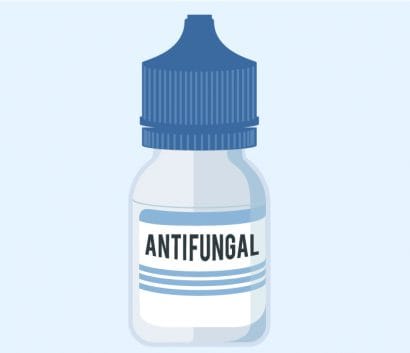Treatment for Fungal Eye Infections
The treatment for a fungal eye infection depends on:
- The type of fungus,
- The severity of the infection, and
- The parts of the eye that are affected.

Possible forms of treatment for fungal eye infections include:
- Antifungal eye drops
- Antifungal medication given as a pill or through a vein
- Antifungal medication injected directly into the eye
- Eye surgery
All types of fungal eye infections must be treated with prescription antifungal medication, usually for several weeks to months. Natamycin is a topical (meaning it’s given in the form of eye drops) antifungal medication that works well for fungal infections involving the outer layer of the eye, particularly those caused by fungi such as Aspergillus and Fusarium. However, infections that are deeper and more severe may require treatment with antifungal medication such as amphotericin B, fluconazole, or voriconazole. These medications can be given by mouth, through a vein, or injected directly into the eye. Patients whose infections don’t get better after using antifungal medications may need surgery, including corneal transplantation, removal of vitreous gel from the interior of the eye (vitrectomy), or, in extreme cases, removal of the eye (enucleation).
- Thomas PA, Kaliamurthy J. Mycotic keratitis: epidemiology, diagnosis and managementexternal icon. Clin Microbiol Infect 2013;19:210-20.
- Durand ML. Endophthalmitisexternal icon. Clin Microbiol Infect 2013 Mar;19(3):227-34.
- Riddell J, Comer GM, Kauffman CA. Treatment of endogenous fungal endophthalmitis: focus on new antifungal agentsexternal icon. Clin Infect Dis 2011 Mar 1;52(5):648-53.